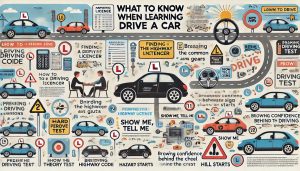 What to Know When Learning to Drive a Car
What to Know When Learning to Drive a Car
Learning to drive is one of life’s most exciting milestones. It’s the start of independence, freedom, and new opportunities — but it can also feel daunting when you first get behind the wheel. Whether you’re a complete beginner or preparing for your test, here’s a guide to the key things you need to know when learning to drive a car in the UK.
1. You Need a Provisional Licence
Before you can start lessons, you’ll need a provisional driving licence before taking any driving lessions in barnes green. Apply online through the DVLA, and remember to take it with you to your first lesson and your theory and practical tests.
2. Choosing the Right Instructor Matters
Look for a DVSA-approved driving instructor (ADI) with good reviews and a teaching style that suits you. The right instructor will not only prepare you for the test but also build safe driving habits for life.
3. Regular Lessons Work Best
Consistency is important. Aim for 1–2 lessons per week so you don’t forget what you’ve learnt between sessions. Intensive courses can also help if you want to progress quickly.
4. Private Practice Builds Confidence
If you have access to a suitable car, practising with a supervising driver (aged 21+ with three years’ experience) is invaluable. Make sure the car is insured for learners and always display L-plates.
5. The Highway Code Is Essential
Driving is about more than handling the car. You’ll need a strong understanding of the Highway Code, including road signs, markings, and rules for different types of road users.
6. You’ll Take Two Tests
-
Theory test – multiple-choice questions and hazard perception.
-
Practical test – a driving assessment with an examiner, including general driving and manoeuvres.
Passing both is required before you can hold a full licence.
7. It Takes Time to Learn
The average learner needs around 45 hours of lessons plus 20 hours of practice. Don’t compare yourself to others — progress at your own pace.
8. Expect to Make Mistakes
Stalling, wrong turns, or missed signals happen to every learner. The important part is staying calm, correcting safely, and learning from it.
9. Practise in Different Conditions
Try to experience driving at night, in the rain, and on busier roads (when your instructor feels you’re ready). This variety will prepare you for real-world situations.
10. Confidence Comes with Experience
At first, driving may feel overwhelming. But with practice, everything from gear changes to roundabouts will become second nature.
